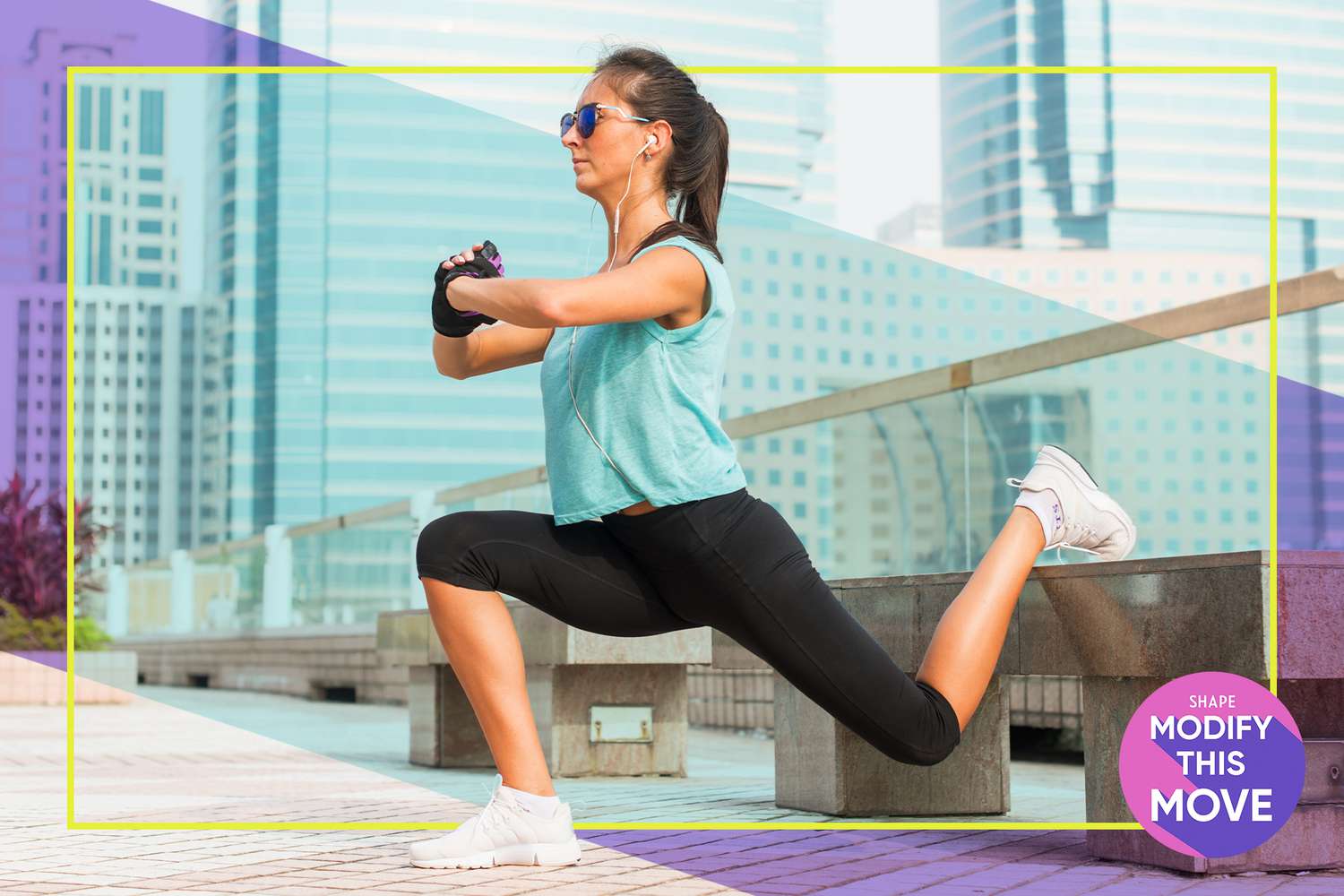A Guide to Finding the Ideal Bulgarian Split Squat Variation for Your Body

Welcome to Modify This Move, the ongoing series where you'll find everything you need to amend a standard exercise to meet your goals, your body, and your mood. Each story breaks down how to perform a foundational fitness move, then offers various modifications based on your current fitness or energy level, present or prior injuries, or the muscles you want to target most. So check your ego at that door and ensure every workout meets you where you're at today.
The exercise 'Bulgarian split squat' sounds complicated, but the leg burner is simply a modified combination of a squat and lunge. Typically performed in a gym setting (you generally need a bench and weights), this quad-building exercise requires precise form to avoid injury to your knees and back. Ensure you're doing the exercise correctly and challenge your strength, mobility, and balance with these modifications for athletes of all fitness levels and abilities. ICYMI, modifying an exercise is a smart way to ensure you're getting the most out of the move for your body.
A traditional Bulgarian split squat is a quad-focused exercise with additional recruitment from your glutes, core, and calves. To hit the quads, a more upright posture is ideal. There are several set-ups for this exercise, but to ensure consistency and proper alignment where your shins and torso are relatively parallel, the one I recommend is the following:
A. Sit on a bench, kick one leg out in front, placing the heel on the floor. Stand to place foot where heel landed.
B. Raise back foot, resting shoe laces on the bench.
C. Lower straight down. The front shin and torso stay aligned relatively parallel. Keep 90 percent of your weight in the front working leg.
D. Push through the front foot to raise straight up to starting position.
Using a weight during Bulgarian split squats provides an additional challenge to the muscles. When you increase the load of this exercise, you can do fewer repetitions before reaching close to muscular failure.
For Bulgarian split squats, avoid using extremely heavy loads to do low repetition ranges, such as 2 to 5 reps, as you would for building strength and power with standard squats. Since this movement requires balance and is unilateral, it's best to stick to a medium to high rep range, such as 10 to 15. Use a weight load that will challenge you and be sure to stop when you feel you can only complete 2 to 3 more reps with perfect form.
While Bulgarian split squats use a full range of motion when done traditionally, you can still reap the benefits of this move by limiting the bend in your knee to 90 degrees. This modification will make the movement a bit more accessible for anyone who finds a deep squat too difficult. Using bodyweight only will also reduce the challenge to your quadriceps while still providing plenty of stimulus to the muscles if you are new to this move.
If balancing during the Bulgarian split squat is too challenging, you can try a regular split squat that works the same muscle groups but allows you to keep your rear foot stays on the floor. Alternatively, you can place your foot on a shorter riser or step that's a few inches high (as opposed to a weight bench that is usually 17 inches high). For this variation, you can place some of your weight on the rear foot if you need to, increasing stability. Try for an approximation of 70 percent of your weight on the front foot and 30 percent on the back. If this is too difficult, try 60 percent on the front foot and 40 percent on the back until you gain more confidence and strength.
A few tweaks to the basic Bulgarian split squat form can help you better isolate the glute muscles. While you'll still hit your glutes in a less direct way with the traditional set-up, you can turn Bulgarian split squats into a glute-focused move by hinging at the hips and leaning your torso forward. This tweak shifts your center of gravity forward and forces your glutes to turn on and work harder to push you back up.
Photography: Rachel MacPherson
Model and fitness expert: Rachel MacPherson




